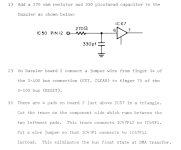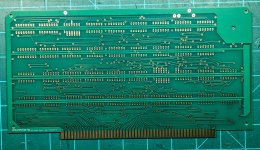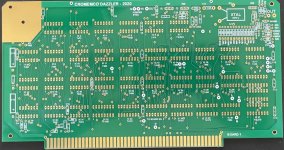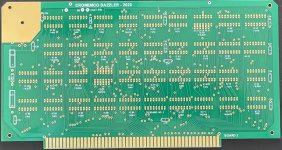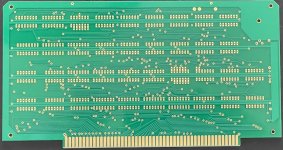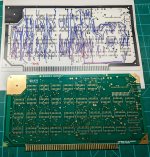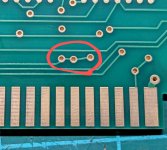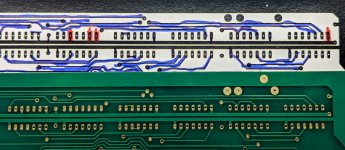It is interesting the issue of pull ups on plain TTL, while they are recommended (not as a direct connection) but with a pullup resistor, typically 1k or thereabouts, there are a good number of professionally made TTL circuits, using 74 series parts, that left the inputs floating to assume a high logic state, there are a few inputs in Atari's arcade Pong for example. There are many other designs I have seen that omit them (for plain 74 series TTL's). One is a frequency counter made by Communications concepts, and they ground lines on DIP switches with diodes, for a switching option, but otherwise the floating input sits at logic high.
In the case of the Dazzler board IC 23 pin 10 was tied high by the designers. That small link was missing from my board it appears, it doesn't stop it from working, I think though, it is better to connect it as the designers had it, even though ideally it would have had a pullup resistor.
The foil patterns I used were Rev C , they were nowhere near as clear as the colored ones posted, I had fairly poor monochrome patchy images.
Also, one thing I noticed about the original foil patters, the geometry of the S-100 edge connectors appeared off. So I had to look up the geometry of the S-100 card and figure out how to exactly space the fingers. Whether this was due to geometric distortion of the images I had, or possibly the original boards were not quite right, I am not sure.
If you plan to use these boards in a SOL-20 like I did, it pays to move the position of the video output connector pins on the pcb, to avoid the card slides. Possibly other computers with different card slides might or might not have this issue.

